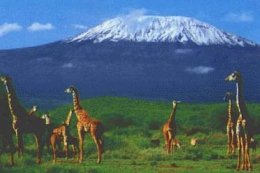Did you know that it is acceptable to marry another woman in some cultures – and I am not talking about lesbianism here. Among the Kipsigis of Kenya, a woman who has no sons or children can be allowed to ‘marry’ another woman to bear her children. The woman will choose a ‘wife’ and who the lover of the ‘wife’ should be by paying one cow. Children who are born from such unions are recognized as belonging to the cow giver’s clan. In this community, it is quite rare for couples to divorce, even though a husband and wife may have separated for years.
The Kipsigis culture displays the common characteristics of East African cattle keeping communities. This includes male and female initiations, payment of hefty dowries as bride price, age sets and women marriage. The term Kipsigis literally means ‘I say to you’. The term was coined during the late colonial period in radio broadcasts and political rallies. This was when major political realignments were taking place in Kenya. In the past, the Kipsigis were organized on a tribal level. A growing population and pressure on resources has resulted in them gaining an interest in farming in addition to pastoralism. The Kipsigis form one of the main tea growing communities in Kenya, apart from the Kikuyu, Luhya and Meru communities who also grow tea. The Kipsigis still value their cultural heritage and beliefs. A favorite drink of the people in this community is a sour milk that is popularly referred to as Mursik.
The Kipsigis form the largest Kalenjin speaking group in Kenya. They can be found in Kericho, in the Rift Valley. There are no precise figures on the number of Kipsigis speakers. This is due to the fact that the Kenyan census reports does not distinguish the Kipsigis as a separate population group from the Kalenjin people. Estimates put the number of Kipsigis speakers to approximately 2.5 million. This accounts for 50 percent of the whole Kalenjin community. Kipsigis is a tonal language. It is classified as a Highlands Nilotic language that falls under the Nilo-Saharan family. The Kipsigis migrated from Sudan in the 18th century and moved into Kenya.
